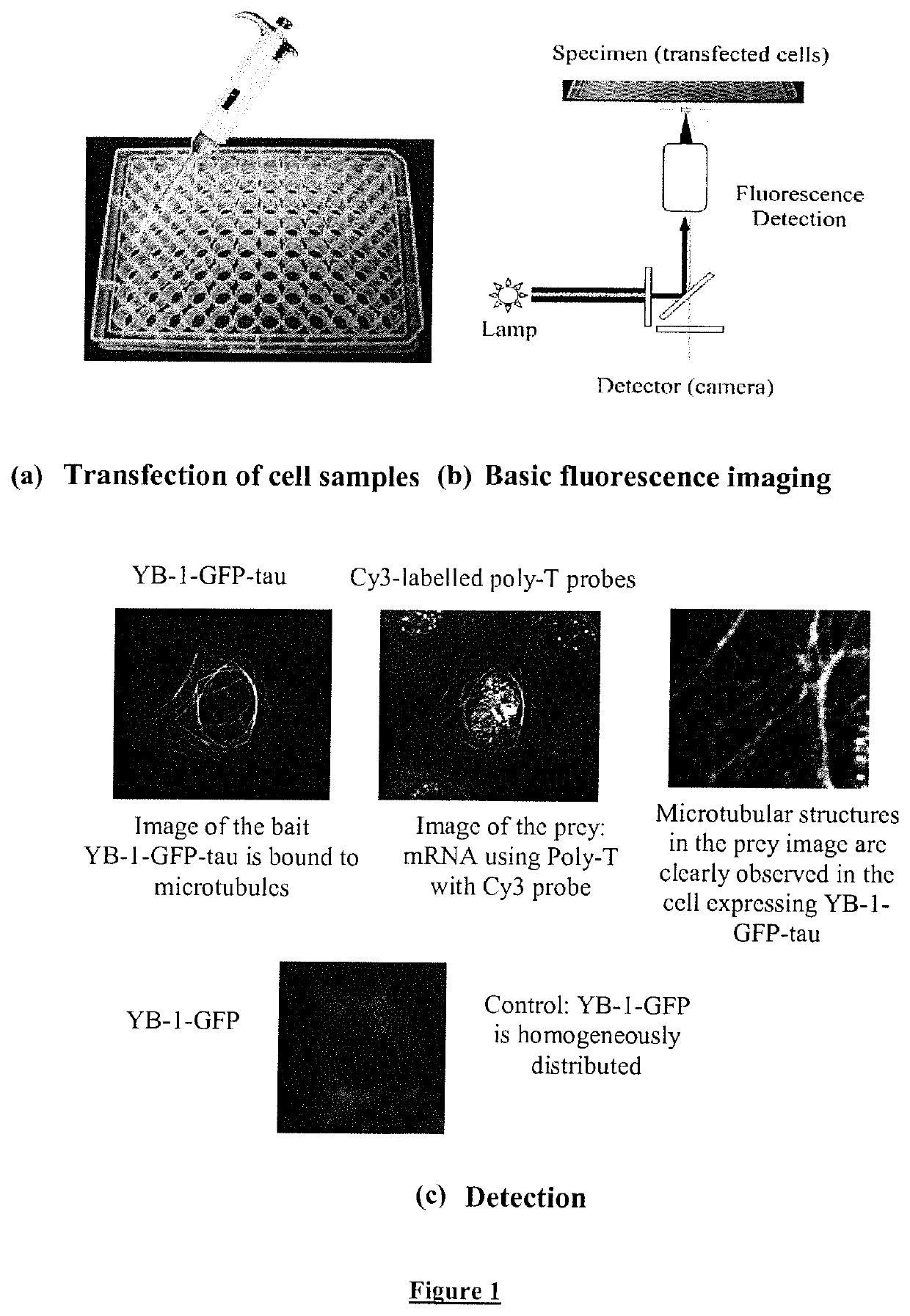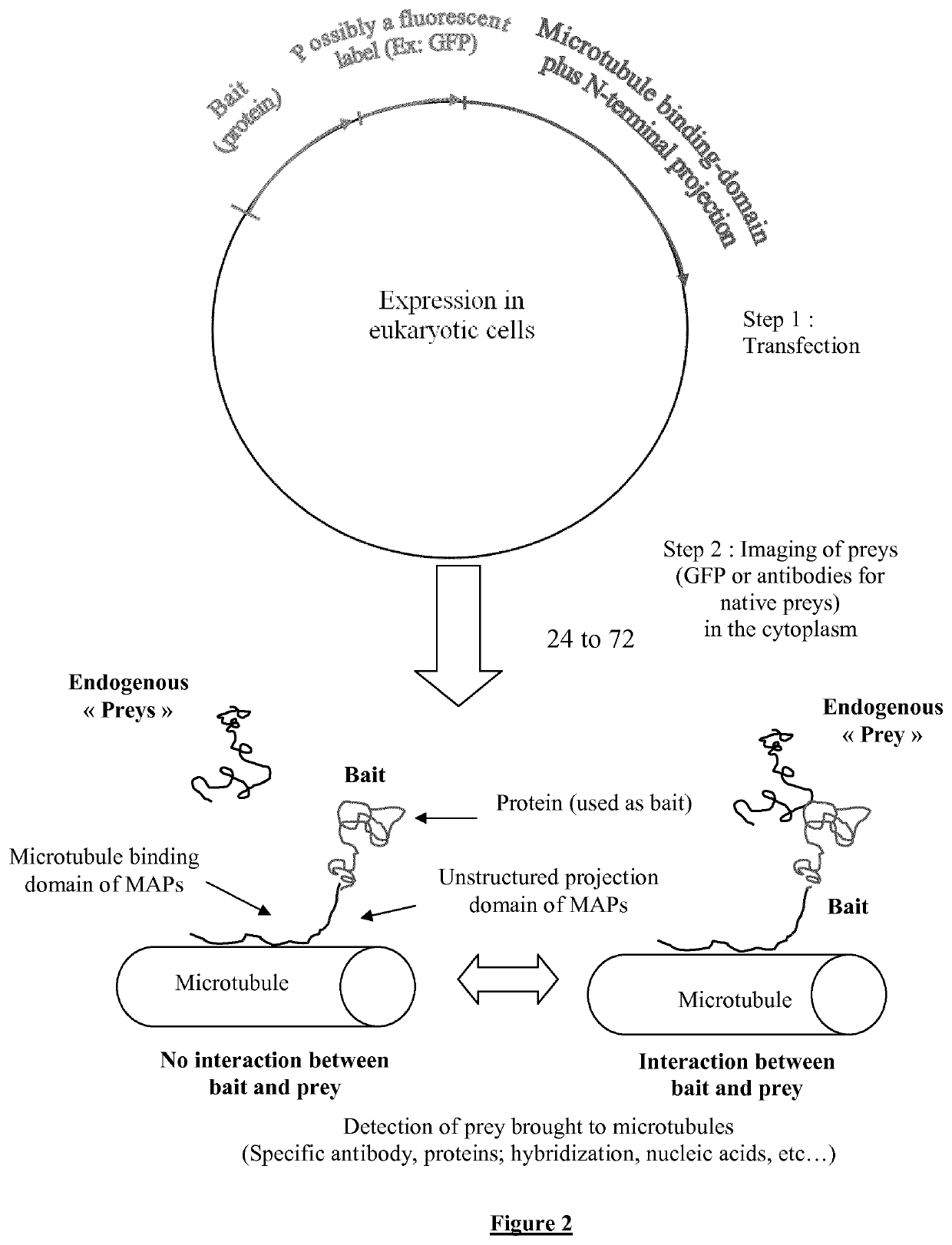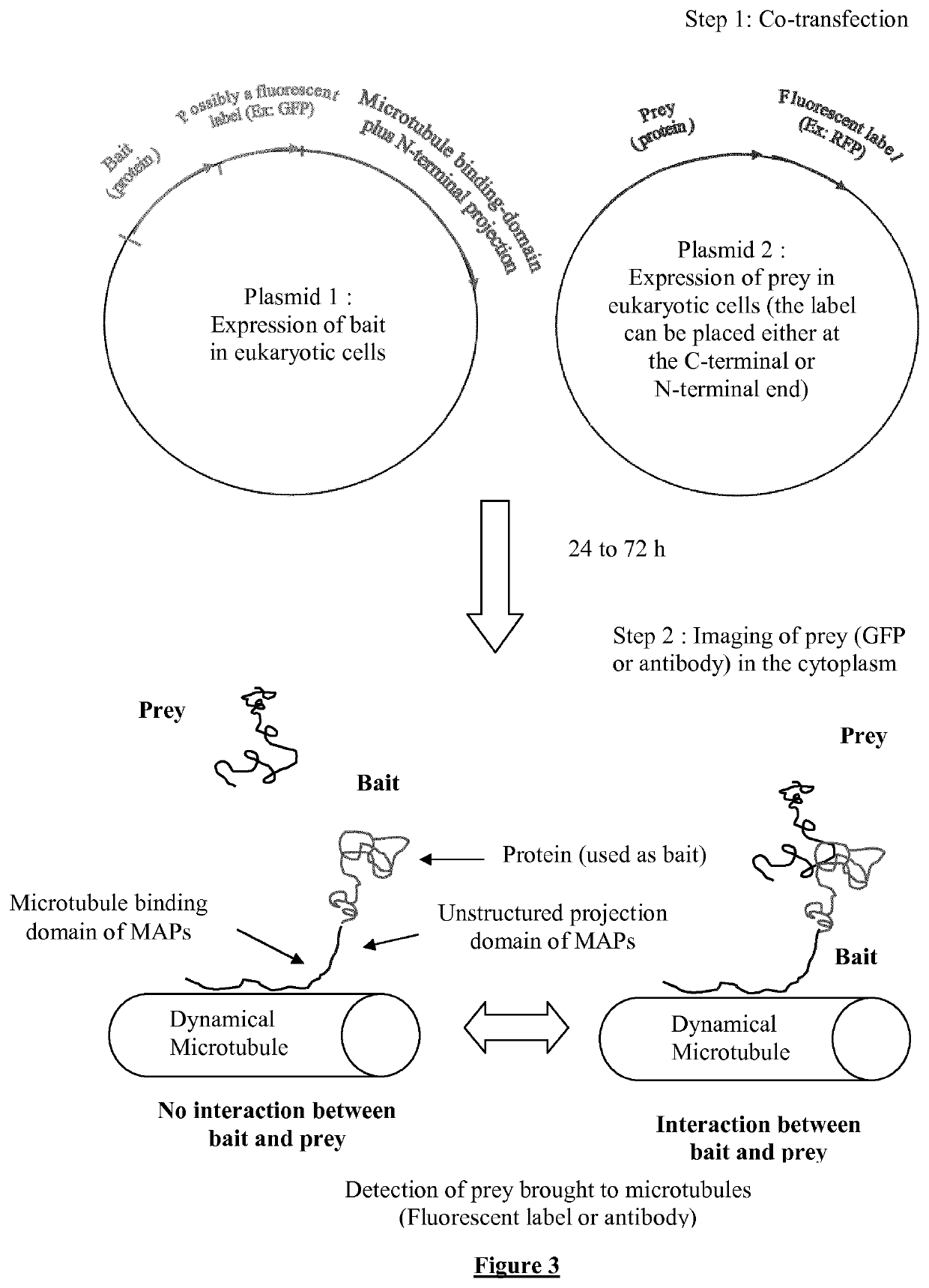Methods and tools for detecting interactions in eukaryotic cells using microtubule structures and dynamics
a microtubule and eukaryotic cell technology, applied in the field of methods and tools for detecting interactions in eukaryotic cells using microtubule structures and dynamics, can solve the problems of affecting the accuracy of eukaryotic cells, so as to achieve high throughput methods, easy detection, and high sensitivity protein partners
- Summary
- Abstract
- Description
- Claims
- Application Information
AI Technical Summary
Benefits of technology
Problems solved by technology
Method used
Image
Examples
example 1
rotocol for High-Throughput Analysis and Detection System
[0250]1) The cDNA sequences encoding for a known protein or a polypeptide chain called “bait” are inserted in a plasmid which directs, within the cell the synthesis of this bait fused to a microtubule binding protein (tau, MAP2) or domain linked to a projection domain to favor bait's accessibility to prey. The bait can additionally be fused to fluorescent label like a fluorescent protein (GFP, RFP, . . . ).
[0251]2) cDNA sequences encoding the “prey”, a polypeptide or protein, are inserted in a plasmid to direct its expression within cell. The prey is possibly fused to a fluorescent label such as a fluorescent protein (i.e. GFP or XFP) for its detection in living cells via fluorescence microscopy.
[0252]3) Array of cell samples in 6 to 96-well plates are co-transfected with different preys (see FIG. 1) to identify various interacting partners for given bait at high throughput. An automatic detection system allows the recognition...
example 2
of YB-1 Self-Attraction and YB-1 Binding to cy3-Labeled-Poly-T-Probes in Fixed and Living NRK Cells
[0261]YB-1 (Accession number: NP_004550.2) is known to be one of the core mRNA-binding proteins (Nekrasov et al., The mRNA-binding protein YB-1 (p50) prevents association of the eukaryotic initiation factor eIF4G with mRNA and inhibits protein synthesis at the initiation stage. J Biol Chem 278, 13936-13943; 2003). We then investigated whether or not mRNA molecules can be brought to microtubules using YB-1-tau as bait (FIG. 1C).
[0262]In FIG. 1C we show NRK cells transfected with the human YB-1 protein, an mRNA binding protein, fused to tau and GFP. The bait, YB-1-GFP-tau, was then indeed detected on microtubules in the GFP fluorescence image, in contrast to YB-1-GFP or endogenous YB-1 which remained dispersed in the cytoplasm.
[0263]mRNA molecules were clearly detected on microtubules using in situ hybridization (cy3-labeled poly-T probes) on transfected and fixed cells but not on those ...
example 3
of Binding of eIF2A to eIF2B After eIF2A Phosphorylation in Living Cells
[0268]In FIG. 6A, in HeLa cells transfected with eIF2B-tau, eIF2B-tau is bound to microtubules as clearly observed using anti-eiF2B labeling.
[0269]One of the early responses in mammalian cells exposed to environmental stress (hyperthermia, osmotic stress, hypoxia, oxidative stress, virus) is to block the initiation of translation. Such initiation block is mediated by the phosphorylation of the initiation factor eIF2A via various kinases like PKR and PERK. This phosphorylation occurs at serine 51 and leads to the strong binding of eIF2A to eIF2B. The formation of this complex prevents the regeneration of eIF2A-GDP (GDP / GTP regeneration) by eIF2B (Krishnamoorthy et al.; Tight binding of the phosphorylated alpha subunit of initiation factor 2 (eIF2alpha) to the regulatory subunits of guanine nucleotide exchange factor eIF2B is required for inhibition of translation initiation. Mol Cell Biol 21, 5018-5030; 2001).
[02...
PUM
| Property | Measurement | Unit |
|---|---|---|
| length | aaaaa | aaaaa |
| length | aaaaa | aaaaa |
| inner diameter | aaaaa | aaaaa |
Abstract
Description
Claims
Application Information
 Login to View More
Login to View More - R&D
- Intellectual Property
- Life Sciences
- Materials
- Tech Scout
- Unparalleled Data Quality
- Higher Quality Content
- 60% Fewer Hallucinations
Browse by: Latest US Patents, China's latest patents, Technical Efficacy Thesaurus, Application Domain, Technology Topic, Popular Technical Reports.
© 2025 PatSnap. All rights reserved.Legal|Privacy policy|Modern Slavery Act Transparency Statement|Sitemap|About US| Contact US: help@patsnap.com



